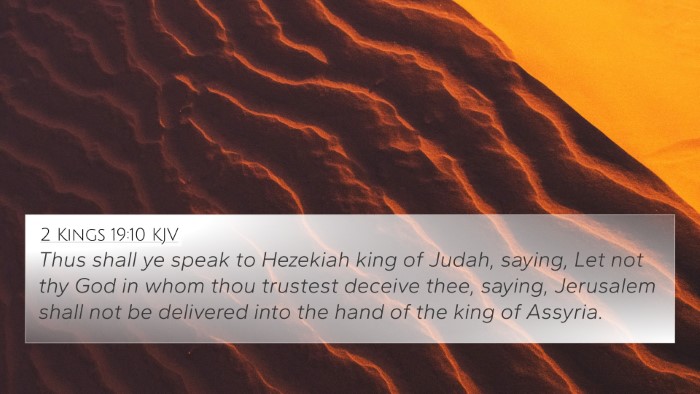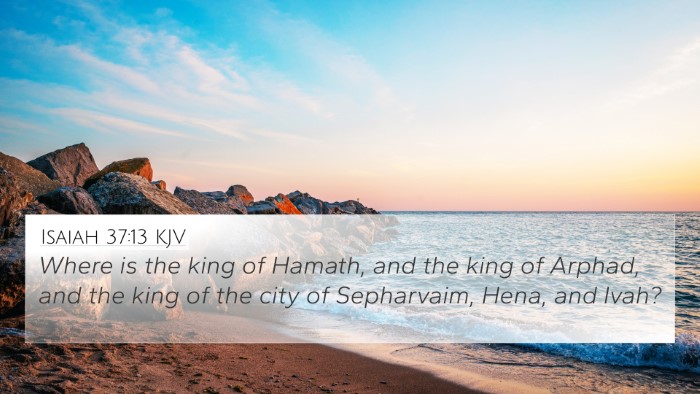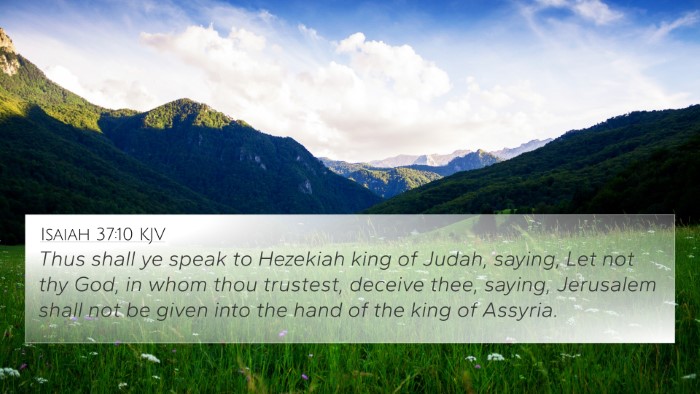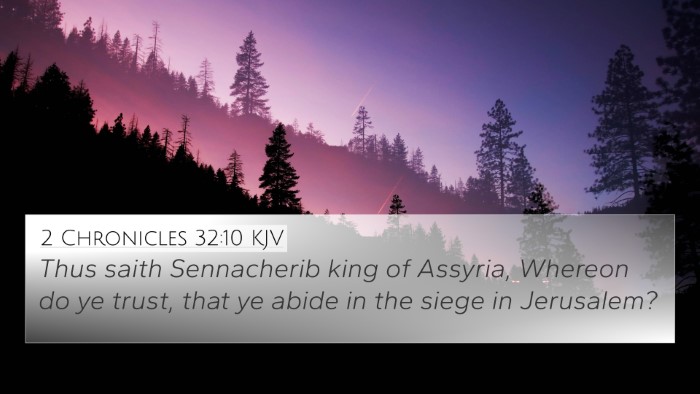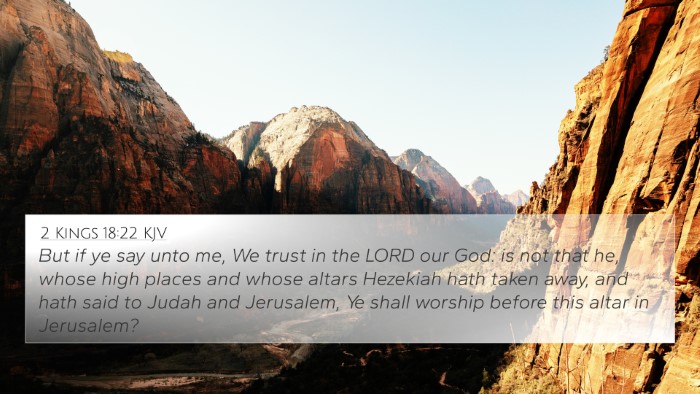Understanding 2 Kings 18:19
The verse from 2 Kings 18:19 states:
"And the king of Assyria sent the Tartan and the Rabsaris and the Rabshakeh from Lachish to King Hezekiah with a great host against Jerusalem. And they went up and came to Jerusalem. And when they were come up, they came and stood by the conduit of the upper pool, which is in the highway of the fuller's field."
This verse references a pivotal moment during King Hezekiah's reign in Judah, focusing on the Assyrian challenge to Jerusalem. The following sections summarize insights from various public domain commentaries to provide a deeper understanding of the themes and implications of this verse.
Contextual Background
In this passage, the kingdom of Judah faces an immense threat from the powerful Assyrian Empire, led by King Sennacherib. The inclusion of various figures, such as the Tartan (commander), Rabsaris (chief officer), and Rabshakeh (chief cupbearer), highlights the militaristic and political nature of this encounter. It sets the stage for a clash not just of arms, but of ideologies and faith.
Commentary Insights
-
Matthew Henry:
Henry emphasizes the ferocity of the Assyrian advance and the psychological warfare employed by Sennacherib’s messengers. He interprets the presence of these officials as an intimidation tactic, aimed at undermining Hezekiah’s faith and confidence.
-
Albert Barnes:
Barnes notes the strategic importance of the location 'by the conduit of the upper pool.' It serves as a significant point for both military and psychological operations, where the Assyrians could display their strength against the people of Jerusalem.
-
Adam Clarke:
Clarke discusses the title held by each of the Assyrian envoys, explaining their roles and how having such a presence in Judah's capital is a direct affront and a warning to Hezekiah and his people. He accentuates the overall sense of dread that would be felt by the citizens.
Thematic Analysis
This verse reflects several key themes in scripture, particularly:
-
Faith under Pressure:
The arrival of such a massive army presents a scenario that tests the faith of God's people. The narrative continues to explore Hezekiah's response to this overwhelming crisis.
-
Divine Sovereignty:
Though the Assyrians come with great force, the undercurrent of divine control over nations and events reaffirms that God’s plan is still at work.
-
Political vs. Spiritual Warfare:
The Assyrian threat embodies not only military might but also spiritual challenges, implying that the fight is as much about faith as it is about survival.
Cross-References
This verse can be connected to other scripture references, providing a framework for understanding the broader biblical narrative:
- Isaiah 36:1-3: The parallel account of the Assyrian siege against Jerusalem.
- 2 Chronicles 32:9-19: Another narrative pertaining to King Hezekiah’s fears and the Assyrian threat.
- Isaiah 37:10-14: King Hezekiah receives a letter from Sennacherib, further emphasizing the threat.
- 2 Kings 19:14-19: Hezekiah’s prayer in response to the Assyrian crisis.
- Psalm 46:1-3: A psalm expressing confidence in God’s protection amid chaos.
- Psalm 124:1-5: Reflects on the deliverance from overwhelming odds.
- Jeremiah 17:5: Discussing trust in man versus trust in God.
- Matthew 10:28: On fearing God rather than those who can destroy the body.
- Romans 8:31: Assurance that if God is for us, who can be against us.
- James 4:7: Submission to God and resistance against the enemy.
Conclusion
In response to 2 Kings 18:19, it's important to grasp that this historical account carries rich theological significance. Hezekiah's predicament against the Assyrian King invites believers to reflect on their own faith journeys when confronted with daunting challenges.
Understanding the connections between Bible verses, as highlighted in this exposition, not only aids in interpreting this specific passage but also in comprehending the textured and interwoven nature of Scripture as a whole.
For those studying biblical texts, utilizing tools for Bible cross-referencing can deepen the exploration of these themes and bring greater clarity to how verses relate to one another across both the Old and New Testaments.




